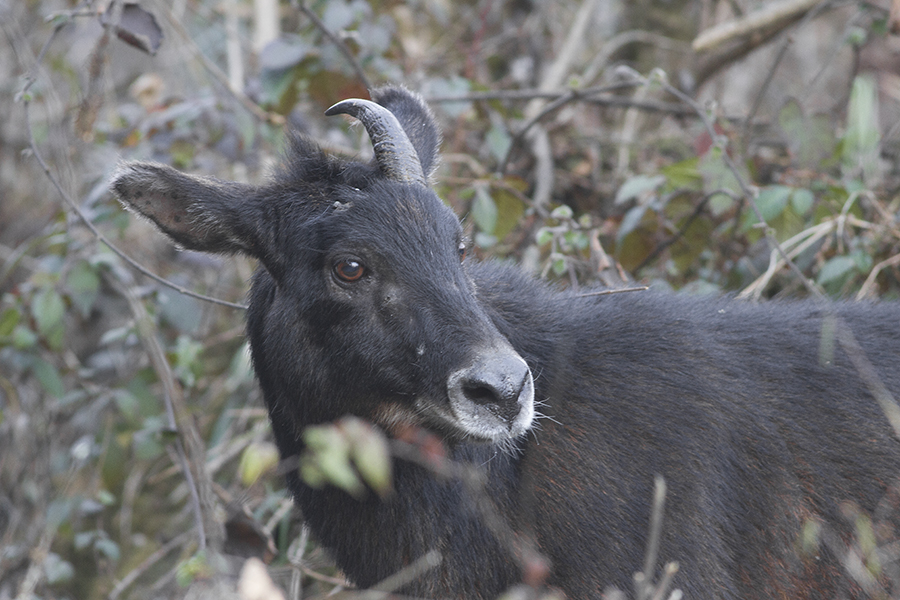Context
- Recently, a Himalayan Serow (Capricornis thar) has been sighted for the first time in the Himalayan cold desert region.
Key Details
- The animal was spotted by locals and wildlife officials at a riverside rocky wall near Hurling village in Spiti, Himachal Pradesh.
- This is the first recorded human sighting of the Serow in Himachal Pradesh.
- Serows are generally not found at this altitude, and never before has a Serow been seen in the Himalayan cold desert.
- Wildlife officials believe this particular animal may have strayed into the Spiti valley from the Rupi Bhaba Wildlife Sanctuary in adjoining Kinnaur.
Back to Basics
About Himalayan Serow
- Resembles a cross between a goat, a donkey, a cow, and a pig.
- They are herbivores and are typically found at altitudes between 2,000 metres and 4,000 metres (6,500 to 13,000 feet).
- They are known to be found in eastern, central, and western Himalayas, but not in the Trans Himalayan region.
- They are a medium-sized mammal with a large head, thick neck, short limbs, long, mule-like ears, and a coat of dark hair.
- There are several species of Serows, and all of them are found in Asia.
- Taxonomically, it is a subspecies of the mainland serow (Capricornis sumatraensis).
Conservation Status
- According to the International Union for Conservation of Nature (IUCN), Himalayan serows have experienced significant declines in population size, range size and habitat in the last decade, and this is expected to continue due to intensive human impact.
- Previously assessed as ‘near threatened’, the Himalayan Serow is now been categorised as ‘vulnerable’ in the IUCN Red List of Threatened Species.
- It is listed under Schedule I of The Wildlife Protection Act, 1972, which provides absolute protection.


